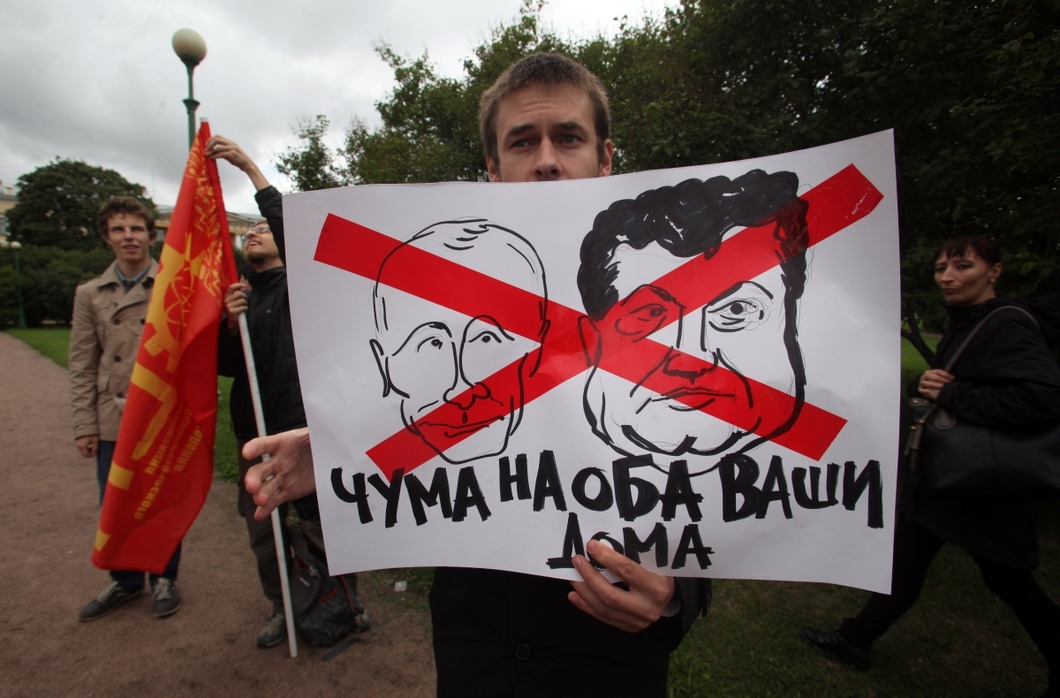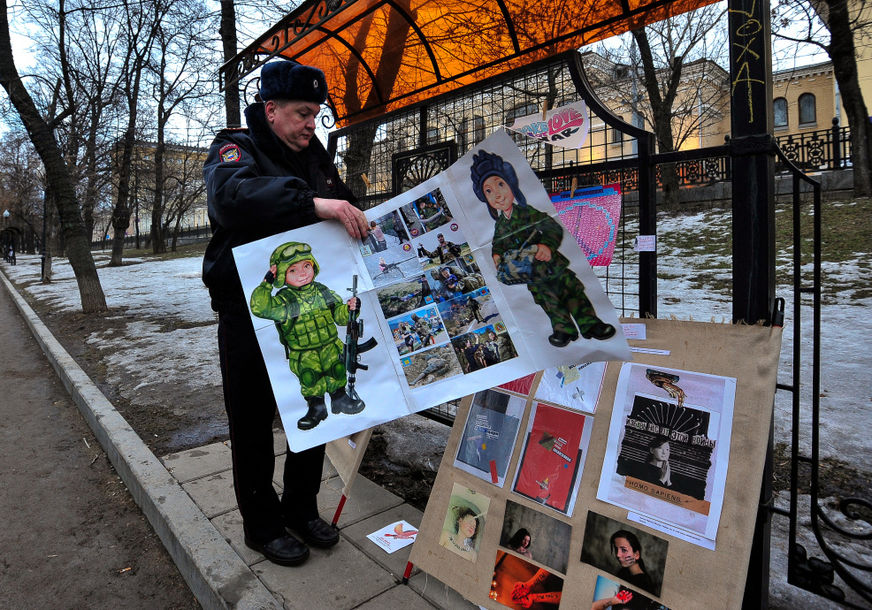‘Hearing the word ‘peace’, I grab my pistol’
 A writer for the ‘Novaya Gazeta’, Yann Shenkman, writes about the history of the Russian anti-war movement from the beginning of the Ukraine conflict to present day. Anti-war protests began in Moscow even before active military activities started and even before the Crimean referendum. The first protest was an unsanctioned ‘meeting’ on 2 March 2014.
A writer for the ‘Novaya Gazeta’, Yann Shenkman, writes about the history of the Russian anti-war movement from the beginning of the Ukraine conflict to present day. Anti-war protests began in Moscow even before active military activities started and even before the Crimean referendum. The first protest was an unsanctioned ‘meeting’ on 2 March 2014.
Activists handed out leaflets with the words ‘No to intervention!’. About 50 people came out to protest, and there were about three times as many security forces. Then the call for pacifism was taken by the people as a sign of being pro-Ukrainian. “This meeting is in support of Ukraine,” said those who passed by grimacing. Not against war, but in support of another country.
And again, security forces appeared. On the same day, an anti-war protest took place in St Petersburg with about 400 people showing up. This occurred about half a year before a large meeting took place where several-thousand called out for peace, which was widely covered by the Russian media.
The first march only took place in September. That was the start of the anti-anti-war movement. Starting from that moment, any pacifist protest was automatically accompanied by gloomy people with posters saying ‘March for peace – march for the accomplices of murderers!’ and so on.
There were less of them, but they were more ready to fight than the pacifists. The demands to stop the war and withdraw troops started to come up at every protest. Mass anti-war movements became a part of the protest movement which swallowed it up in the end. Today, the demand to end the war has faded into the background of demands for political change.
In Russia, especially now, they are not thinking about peace. When the active phase of the propagandist war finished, the minority of the people took up a clear, pro-Russian stance which is countered by ‘patriots’, and the majority doesn’t care. Many are barely aware that there is a war going on. All pacifist demonstrations over the past three and a half years were in fact directed not against the war, but against mutual hatred.
The main thesis is: we cannot recall troops, but we can make them get along better and to keep on talking, and hate just keeps on feeding the war. The idea is rather naive. And Novaya Gazeta’s action, ‘Congratulations from there to here’ in December 2014, was also naive. Thirty musicians from both countries congratulated each other at New Years’ and said kind words to one another. Shevchuk, Skripka, Surganova and Jamala. There were many views of this video, and the media wrote about this as the first Russian-Ukrainian anti-war project. People were surprised that such a thing was even possible – they shoot, but here we are talking. But neither in 2015 nor in 2016 was it possible to repeat this. The open-hearted nature of both countries ‘ran out’ but dozens of other similar projects were launched after ours. One of the few people that was able to set up a dialogue, though not on a big scale, was Varya Darevskaya.
Starting in 2015, they began shipping letters from Moscow to Donetsk, from Luhansk to Kiev, and from Kiev to Grolovka. People who were supposed to hate each other wrote ‘Our dear ones, our loved ones, forgive us, we want peace!’. They were able to get into the hands of the Ukrainian media, and the letters were subsequently partially published. The Police applied pressure throughout all of this. In Kiev I heard a joke: “Whenever I hear the word ‘peace’, I make a grab for my pistol.”  Courtrooms are becoming the de facto destination for protesters. In the spring of 2016, buses of policemen chased around a mobile exhibition in the center of Moscow called ‘Not Peace’.
Courtrooms are becoming the de facto destination for protesters. In the spring of 2016, buses of policemen chased around a mobile exhibition in the center of Moscow called ‘Not Peace’.
That’s how they hunt terrorists and rebels, and these are just artists and pacifists. They cannot even be considered a ‘fifth column’ – they don’t have anyone or anything. Such is the story of the anti-war movement as of today – arrests, political bias, a series of failures and a sea of misunderstandings.



















